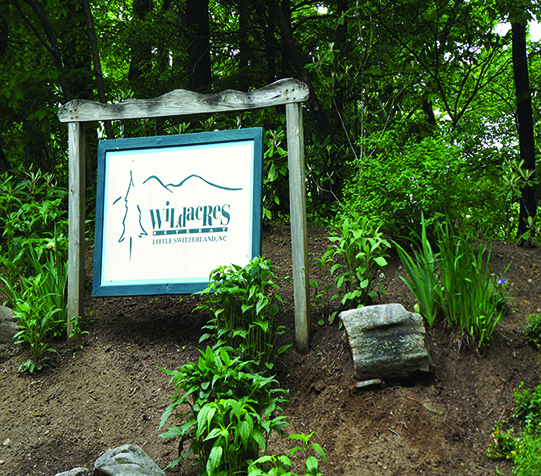
By Helen Serras-Herman
Wildacres Retreat is a center for cultural gatherings, a haven for learning and exchanging of ideas, touching the scenic background of the mountains of North Carolina. It is truly an extraordinary place that nurtures and inspires the imagination and encourages creativity.
Lodging, dining, conference, and workshop facilities welcome over 80 different non-profit organizations that visit Wildacres annually and make it their home for a few days each time. Groups cover the cultural gamut: art, music, poetry and writing, science, religion, and those relevant to lapidary and jewelry. The season for Wildacres runs from April through October. Most of the groups return every year around the same time, some twice a year, and often multiple groups reside during the same week.
Hidden In Nature
The Wildacres Retreat sits hidden away amongst tall trees on top of Pompey’s Knob at the Blue Ridge Mountains of North Carolina, at 3,300 feet elevation. There is no sign on the main road promoting Wildacres. One has to know where to turn off from the Blue Ridge Parkway.
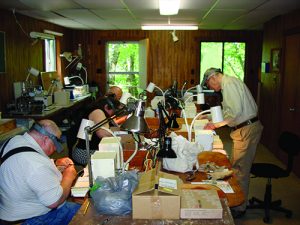
Students cut at least one or two perfect cabochons during the week.
Sitting in the rocking chairs at the beautiful, large flagstone porch between the two main lodge buildings on a clear day, you can see layers of ridges and, far away, the observatory on top of Mount Mitchell. It is the highest peak at 6,684 feet and is located within the Appalachian Mountains, which run north-to-south across much of the eastern United States.
The Blue Ridge Mountains are famous for the bluish color seen from afar, contributed in part by the isoprene colorless liquid that the trees release into the atmosphere. Rain comes often, along with early morning thick fog, which makes the hills and canyons vanish from view, adding an eerie atmosphere, and deepening the mystery of the place.
Wildacres is located three miles from the charming town of Little Switzerland and is close to the larger towns of Spruce Pine and Marion. It is near the famous and most traveled scenic Blue Ridge Parkway that traverses the states of Virginia and North Carolina. The closest cities with an airport are Asheville to the south and Charlotte to the east.
The name “Wildacres” reflects the natural environment – the mountain laurels, rhododendrons, wildflowers, birds, chipmunks, moths, and all other wildlife that call the 1,600 acres home. It is a sanctuary for wildlife as well as artistic endeavors. In addition to buildings usually buzzing with students and teachers, there are many walking paths and sitting areas that offer serene and quiet moments of solitude and reflection.
Mineralogical Societies In House
One of the many organizations that visit Wildacres Retreat twice a year is the Eastern Federation of Mineralogical and Lapidary Societies (or EFMLS, online at efmls-wildacres.org). The EFMLS Wildacres Workshop lasts five days and, in addition to hands-on workshops, EFMLS invites an expert in the field to serve as the “speaker-in-residence.” The speaker presents six different lectures related to gems, minerals, lapidary, mining, and jewelry during the course of the workshop. I have been privileged to be invited to speak and share my artwork and experiences three times over the years, my latest session being last May of 2018. They have all been wonderful experiences, and I am most grateful. In the past, my husband, Andrew, has also shared his opal-cutting techniques. Our senior Rock & Gem consulting editor, Bob Jones, is another beloved and frequent speaker-in-residence at Wildacres.
Another organization that visits and uses the workshop facilities at Wildacres is the Southeast Federation of Mineralogical Societies (SFMS) with clubs in states that stretch from Virginia to Florida (www.amfed.org/sfms/wildacres-retreat.html).
My second trip to Wildacres was sponsored by the West Coast Chapter of the Florida Society of Goldsmiths (or WCFSG, online at www.wcfsg.org), a non-profit organization
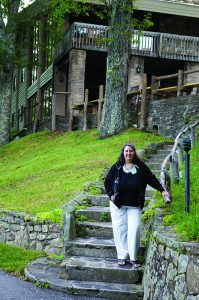
established in 1984 to provide metalsmiths the opportunity to further their education in the metals arts. I was invited to teach gem carving during a five-day workshop summer camp held in June of 2013. I joined five other nationally recognized instructors who offered advanced workshops on metalsmithing and jewelry-making.
Depending on which organization you are with, most classes at Wildacres have no previous experience requirements. Although, some require a minimum level of jewelry making skills. Plus, you have to be a member of the participating groups in order to attend. Being a member of any gem and mineral club in the Eastern or Southern Federation of Mineralogical Societies allows for participation in the sessions. The reasonable participation fees are all-inclusive (room, meals, and workshop tuition), with the exception of the very low instructors’ class material fees.
Wildacres Retreat Accommodations
There are two lodges for sleeping accommodations, a library, an outdoor amphitheater, and an indoor auditorium to host lectures and musical performances. The Science & Craft Workshop houses the lapidary (cabbing and faceting) and metalsmithing workshops. It was built in the 1970s based on the vision of Clay McCall, a faceter from the Charlotte Gem & Mineral Club who was famous for cutting large gemstones. A pottery studio is also available, and several rooms are used for jewelry workshops.
Three meals are served daily at the huge dining hall. A staff member tolls a bell every morning at 7:30 a.m., as well as 10 minutes before every meal is served. Workshop participants and instructors gather around large round tables and, besides the family-style meals, they share stories of the day or their background.
At the entrance of the dining room, a wonderful collection of minerals and gem sculptures, many of them made of North Carolina minerals, offers a glimpse at the local mineral wealth.
Room accommodations are rustic and simple, but very clean and efficient. All rooms have private baths. There are no TVs or radios anywhere. All buildings are heated, but without air-conditioning, only ceiling fans. Dress code is casual, and a jacket, sweater, and good walking shoes are recommended.
Many gather daily at the spacious lobby, as it is the best spot for the Hughes satellite-provided internet access. You know that you are in a remote area when your cell phone is not working, except in a couple spots around the property, depending on your cell phone carrier.
The Workshop Week at Wildacres
The EFMLS Wildacres Workshop week starts on a Monday, and all participants are asked to arrive after 4 p.m., register at the lobby, and settle in before the 6 p.m. dinner. After dinner, there is a short welcome and orientation program. The news and events are shared by the Wildacres Prospector, which was published daily by the late veteran editor Carolyn Weinberger. Mrs. Weinberger passed away in March of 2019.
The speaker-in-residence kicks off the week on Tuesday morning at 9 a.m., then all workshop classes begin shortly after 10 a.m. Most classes are a two-day session, allowing students the option to take another class on a different subject. The more demanding workshops, like faceting, last all four days.
The instructors are all volunteers and most experienced in their art and craft, several of them returning for either the spring or fall sessions every year. Among them is Bernie Emery, the spring lapidary instructor for the past 10 years, who was just inducted into the Rockhound & Lapidary Hall of Fame. He is a fabulous instructor, teaching his students what to look for in rough slabs and how to take advantage of the patterns in the stones. By the end of the session, his students – some complete novices, have cut at least one or two perfect cabochons.
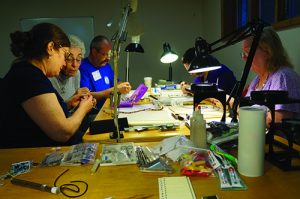
Another fabulous instructor this past year was Chuck Bruce. I wish I could have taken his Loop ‘N Loop class. Steve Weinberger (past AFMS president and EFMLS Wildacres Director) patiently teaches faceting, and Richard Meszler’s silversmithing class is always a favorite. Fresh instructors at every session bring new facets of our jewelry arts to life.
Continuing on with the schedule, the speaker-in-residence presents again on Tuesday evening, followed by presentations Wednesday morning and Wednesday evening. As the week continues, Thursday is regarded as a “free” day. Students and teachers alike go on field trips, museum tours, or simply stay behind and relax. Thursday afternoon there is a “tailgate” swap held in the parking lot, and after dinner there is “Sharing Time” during which participants or the speaker-in-residence may share stories. Friday morning, the speaker comes back for another presentation, followed by an auction Friday evening. Great items offered are all donated, and items donated by the instructors and the speaker are always hot items for fierce bidding. All proceeds help the EFMLS Wildacres fund.
The sixth and final presentation from the speaker-in-residence is on Saturday morning. Immediately after, classes are held for the balance of the day, and after dinner all instructors and students display their creations at a show-and-tell, sharing their funny moments, tribulations, and victories, a fantastic time of pride and achievement. The week wraps Sunday morning after breakfast, and everyone departs by 9 a.m.
A wonderful benefit is that the speaker-in-residence is allowed to join any of the workshop classes. In 2016, I attended the scrimshaw class taught by remarkable scrimshander artist Sandra Brady. We created black-and-white and color scrimshaw on plastic square tiles. I thought that class truly tested my patience levels, until this past year I joined the bead-weaving classes taught by the fabulous and regular Wildacres instructor Mia Schulman.
During our first two-day class, we created a beaded bezel around an oval cabochon, and a woven beaded bracelet during our second session. For those of you who may look down on bead-weaving, I can only tell you that these pieces truly went beyond my patience. The two projects took almost all of the two days each, and although my hands are pretty adept and skillful to fine work, there were times when I felt like a total novice and inadequate. But, with our instructor’s patient coaching and perseverance, our projects were finished.
These results are the objective of the EFMLS Wildacres Workshops, to introduce participants to new and different lapidary and jewelry-making art forms that they may not have encountered before or may have not thought to ever take on. Should the workshop class not be something you want to further pursue, you can now surely appreciate the time, effort and skill that each of these art forms requires.
Origins of Wildacres
I have great respect for men with vision. Yes, a lot of times, it takes money to execute a dream, and often luck plays a pivotal role, but foremost it requires someone with a dream and an idea. That is how Wildacres Retreat was created. It was envisioned as a cultural retreat, a place where artists, authors, actors, musicians, scientists, and philosophers could meet, think, and create in a serene setting.
In 1926, North Carolina state legislator Thomas Dixon Jr., a novelist, purchased 1,000 acres of timberland known as Wildacres. Looking for a new project in life, he started building his vision of Wildacres. Unfortunately, when the financial market collapsed in 1929, so did Dixon’s fortune and his dream.
The buildings on top of Pompey’s Knob sat empty and distressing, waiting for the next
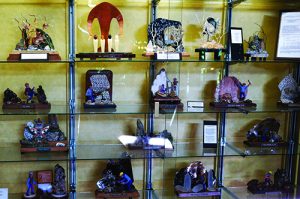
visionary to come along. That was I.D. Blumenthal, who was born in New York City in 1894, and raised in Savannah, Georgia, before moving to Charlotte, North Carolina. He was informed of the sale of Wildacres, offered by a Texas bank. Mr. Blumenthal placed an outrageous bid in the amount of $6,500, and since the bank was holding a note for $190,000, he was sure that his offer would be rejected by the judge. But, call it fate, call it luck, call it his calling, when the court clerk went to assess the property, the fog was so dense, that the dark buildings looked ghostlike and the place forsaken. A few days later his $6,500 bid was accepted.
After spending years restoring the structures with the help of his brother Herman, in 1946 I.D. Blumenthal and his wife, Madolyn, dedicated Wildacres, or “God’s Mountain” as he adoringly called it, “to the betterment of human relations”, with a purpose of promoting brotherhood and interfaith amity and welcoming groups. Every day, participants at Wildacres repeat the words from Psalm 133:1 posted on the wall over the fireplace “Behold how good and how pleasant it is for brethren to dwell together in unity,” reminding everyone the values of this special place.
The first EFMLS Wildacres Workshop was held in 1973, after the encouragement and arrangements of then EFMLS secretary Wilma D. Bonar (later EFMLS president) with the Blumenthal family. The EFMLS Wildacres Workshop cannot materialize without the continuous sponsorship of the Blumenthal Foundation. Philip Blumenthal is the director of Wildacres. The resident manager, Dave Lovett, welcomes every group and takes care of everything on the property: administration, group services, maintenance, and gardening.
Planning a Studying Vacation
You may want to take advantage of your trip to Wildacres (www.wildacres.org) to explore the beautiful attractions that surround this place, either before or after your workshop week.
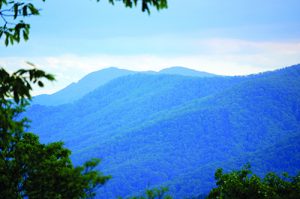
Points of interest include the close-by mines and rock shops in Spruce Pine, the Crabtree and Linville Falls, and the Museum of North Carolina Minerals (as I discussed in the November 2016 issue of Rock & Gem). This past year we visited the Linville Caverns, and Little Switzerland and the Emerald Village, with truly lovely history and minerals on display. I will be sharing more about that in a follow-up article.
A swinging bridge at Grandfather Mountain also attracts visitors, and the related Nature Museum educates them about the natural history of the surrounding region. In Asheville, we have toured the Biltmore Estate, the Colburn Earth Science Museum, Chimney Rock, and the Mineral & Lapidary Museum in Hendersonville (as I discussed in an article published in the November 2013 issue of Rock & Gem). Near Charlotte are the mines at Hiddenite. You can also head down to the Cherokee Indian Reservation and the Smokey Mountains while in the region, or travel further south to Franklin to dig for sapphires. Plan ahead for a “studying vacation,” and it will be unforgettable.
The Wildacres experience is fabulous. It is a totally unique setup, nowhere else in the country to be matched. The locale is incredible, the facilities are well-organized, the views are breathtaking, the serenity of the place is inspiring, and the camaraderie is mind-blowing.
EFMLS Wildacres Workshop 2019
The 2019 Spring and Fall sessions of the EFMLS Wildacres workshops promise to be amazing. In addition to terrific workshop instructors, two fantastic ladies will be the speakers-in residence: Renée Newman for the Spring session, May 20-26, and Elise A. Skalwold for the Fall session, September 2-9.
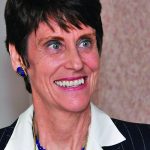
As the new speaker-in-residence program coordinator for the EFMLS Wildacres Workshop Retreat, I was thrilled when they both accepted my invitation to be our 2019 speaker-in-residence. They are both first-timers at Wildacres, acclaimed in their fields, very well respected within the trade community, and are internationally sought-after speakers for gemological conferences and mineralogical symposia.
Renée Newman is a graduate of the University of California at Santa Barbara and a graduate gemologist from the Gemological Association of America (GIA). She was first exposed to beautiful gems while working as an international tour director in Asia, South America, and the South Pacific. She worked as a gemologist at a wholesale firm in Los Angeles and acquired a wealth of knowledge on diamonds, colored stones, and pearls.
Newman is famous for her consumer guidebooks to buying gems. Her first one on diamonds was published in 1989. She’s published 14 books to date. For more information, visit www.reneenewman.com/index.htm
Elise A. Skalwold is an accredited senior gemologist, independent researcher, educator, author, and photographer. She has served as Consulting Gemological Curator at her alma mater, Cornell University (B.Sc. 1982), and is contributing editor and author for the quarterly column “G&G Micro-World” featured in Gems & Gemology, the peer-reviewed scientific journal of the Gemological Institute of America (GIA). Skalwold is a graduate gemologist (GIA).
While living in Thailand, she worked in the famous gem markets of both Chanthaburi and Bangkok and pursued studies at the Gem & Jewelry Institute of Thailand, for which she was subsequently elected a Fellow of the Gemmological Association of Great Britain (F.G.A.) in London.
Passionate about her work, Elise takes great pride in representing gemology as a relevant
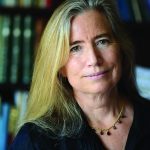
geoscience around the world, having done so at Cornell University. She is an author and co-author of several books, scientific papers, and articles. She has spoken at gemological and mineralogical conferences worldwide, including Scotland, Sweden, Tucson, at the GIA Carlsbad and alumni chapters, the Sinkankas Symposium, and is a repeat speaker at the Rochester Mineralogical Symposium and the New York Mineralogical Club.
For more information about Skalwold, visit www.nordskip.com/aboutelise.html. She will be accompanied by her wonderful husband, James Edwards, a professional geologist.
I definitely encourage all of you to start making plans for Wildacres 2019, as both speakers-in-residence have amazing knowledge and expertise and should not to be missed.
Author: Helen Serras-Herman
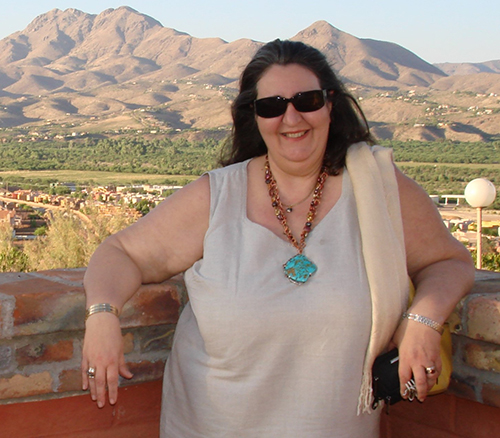 A 2003 National Lapidary Hall of Fame inductee, she is an acclaimed gem sculptor and gemologist with over 35 years of experience in unique gem sculpture and jewelry art.
A 2003 National Lapidary Hall of Fame inductee, she is an acclaimed gem sculptor and gemologist with over 35 years of experience in unique gem sculpture and jewelry art.















